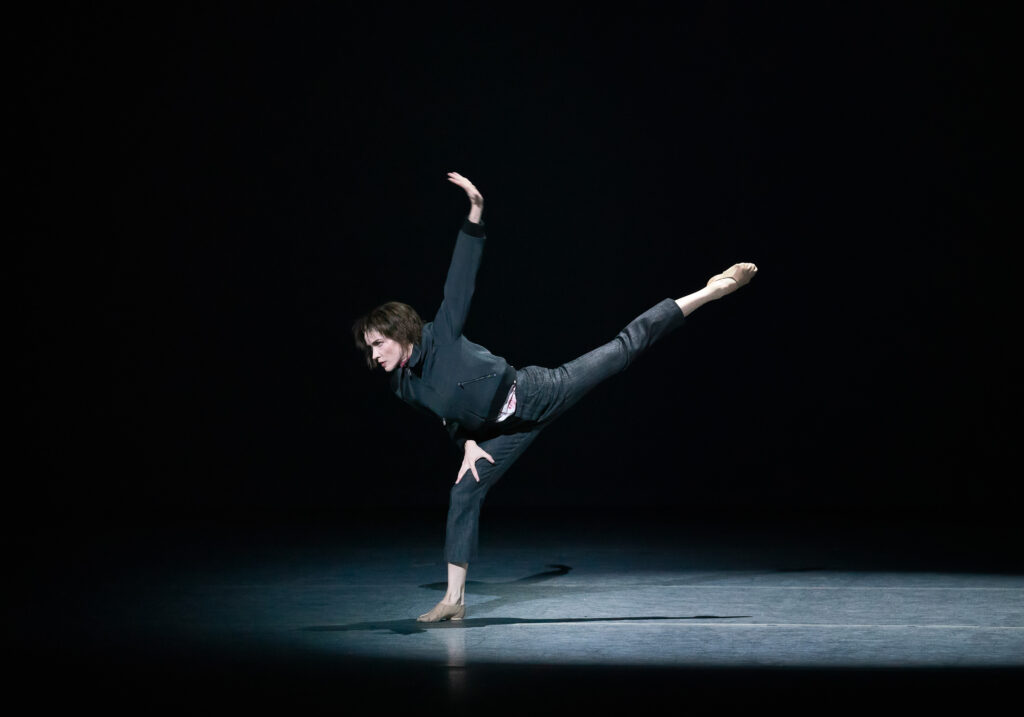THE HANGOVER REPORT – American Ballet Theatre unveils a disorienting but surface-level dance adaptation of CRIME AND PUNISHMENT
- By drediman
- November 5, 2024
- No Comments

American Ballet Theatre concluded its fall season last week at the David H. Koch Theatre at Lincoln Center with the world premiere of choreographer Helen Pickett and director James Bonas’s dance adaptation of one of the great works in Western liturature, Fyodor Dostoevsky’s Crime and Punishment. Set in St. Petersburg, Russia, the ballet chronicles the story of Rodion Raskolnikov, a poor intellectual who makes a case to murder an old pawnbroker with the goal redistributing her wealth for the larger good of humanity. Upon completion of the act, however, Raskolnikov is left confused, thereafter riddled with paranoia and guilt as they stumble through life to an inevitable conclusion.
Given that much of the novel is articulated in Raskolnikov’s mind, the work is a curious choice for a full length ballet adaptation. But by turning it essentially into a cinematic psychological thriller, Pickett and Bonas have altered the intrinsic DNA of the underlying material. Indeed, the creators have tapped into film noir and horror vernacular — unsurprisingly, Isobel Waller-Bridge’s music follows suit and could be effectively used as an actual film score — to replace Dostoevsky’s wrenching philosophical musings. The resulting story ballet Crime and Punishment is overly episodic and event-heavy, going so far as to blur chronology and the boundary between reality and dream state to distract viewers from how thin the surface-level plot actually is. Thankfully, tastefully projected titles help guide the viewer navigate the labyrinthine narrative, and overall, the production is actually one of the more lucid of Ballet Theatre’s recent story ballet efforts (e.g., much of the scenes in both Like Water for Chocolate and Of Love and Rage left me scratching my head over what just transpired). Although the minimalist designs ultimately register more drab and threadbare than sleekly stylish, they allow for a staging that’s in constant motion — a literal dance between Pickett’s highly physical if occasionally flailing choreography and mobile set pieces — contributing to the sense of Raskolnikov’s disorientation. Perhaps the most interesting aspect of the production is the decision to envision Raskolnikov as a gender-neutral character, giving viewers the opportunity to process the story through varying lenses of physicality.
Despite my reservations about the ballet itself, the cast I caught was excellent, starting with Cassandra Trenary in the central role of the anti-hero Raskolnikov (Trenary shares the role with Herman Cornejo). She was extraordinary throughout, thoroughly disappearing into the brooding, temperamental role, even altering her gate and the way she held herself to further her characterization. Of course, especially after having seen her relentlessly attack Molissa Fenley’s State of Darkness at this year’s Fall for Dance, I knew she possessed the intelligence and physical ability to take on the taxing role, and she didn’t disappoint. Other standouts included the lovely SunMi Park as Sonya, who exuded a mysterious purity that transcended the vagueness of the role. Both Christine Shevchenko and Calvin Royal III showed maturity and measured theatrical temperaments as Raskolnikov’s sister Dunya and best friend Razumikhin, respectively. As Svidrigailov, Patrick Frenette stepped in for an indisposed James Whiteside, imbuing the villain of the piece with a subtle seductiveness that brought depth and texture to the role.
RECOMMENDED
CRIME AND PUNISHMENT
Dance
American Ballet Theatre at the David H. Koch Theater
2 hours (with one intermission)
Closed

 Copyright © 2025
Copyright © 2025
Leave a Reply